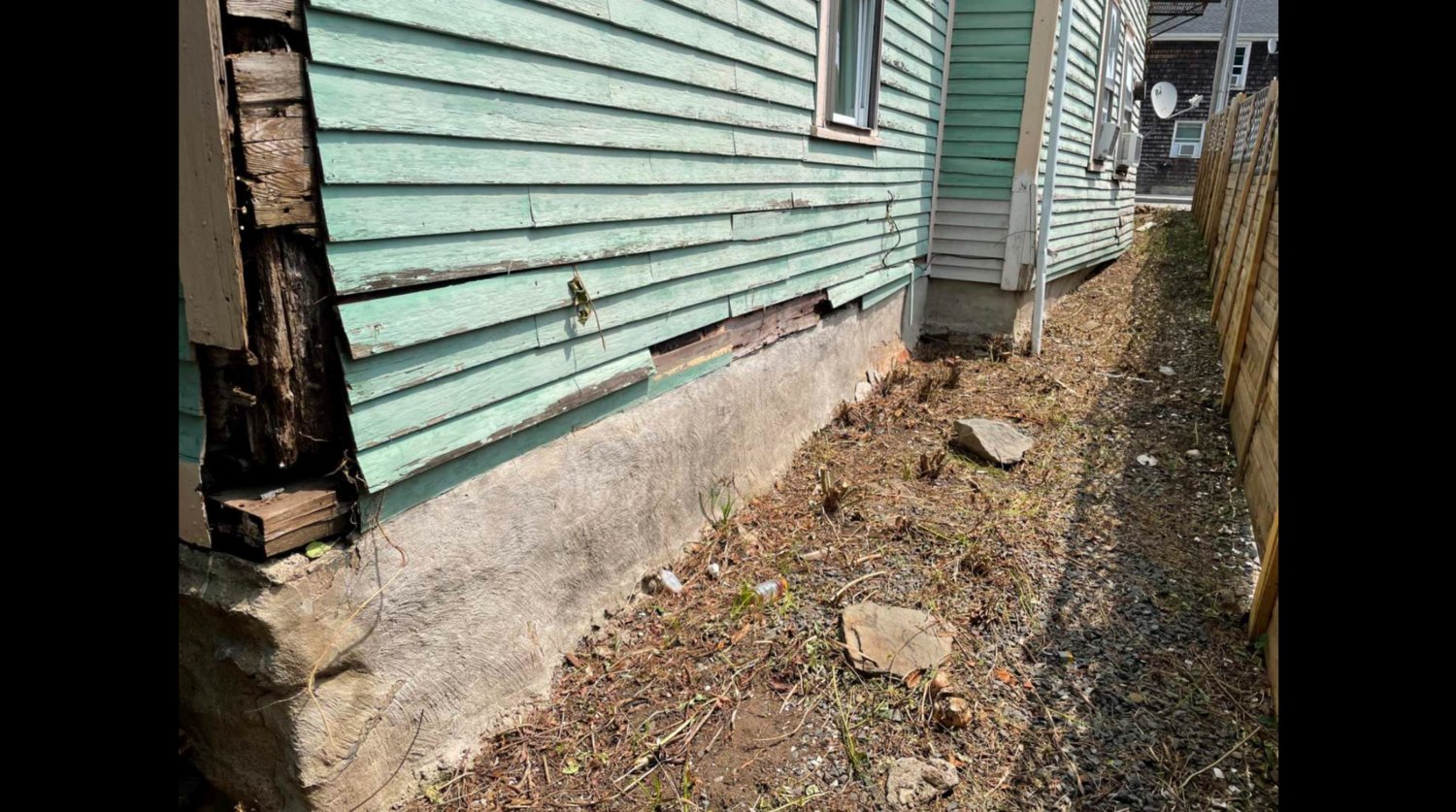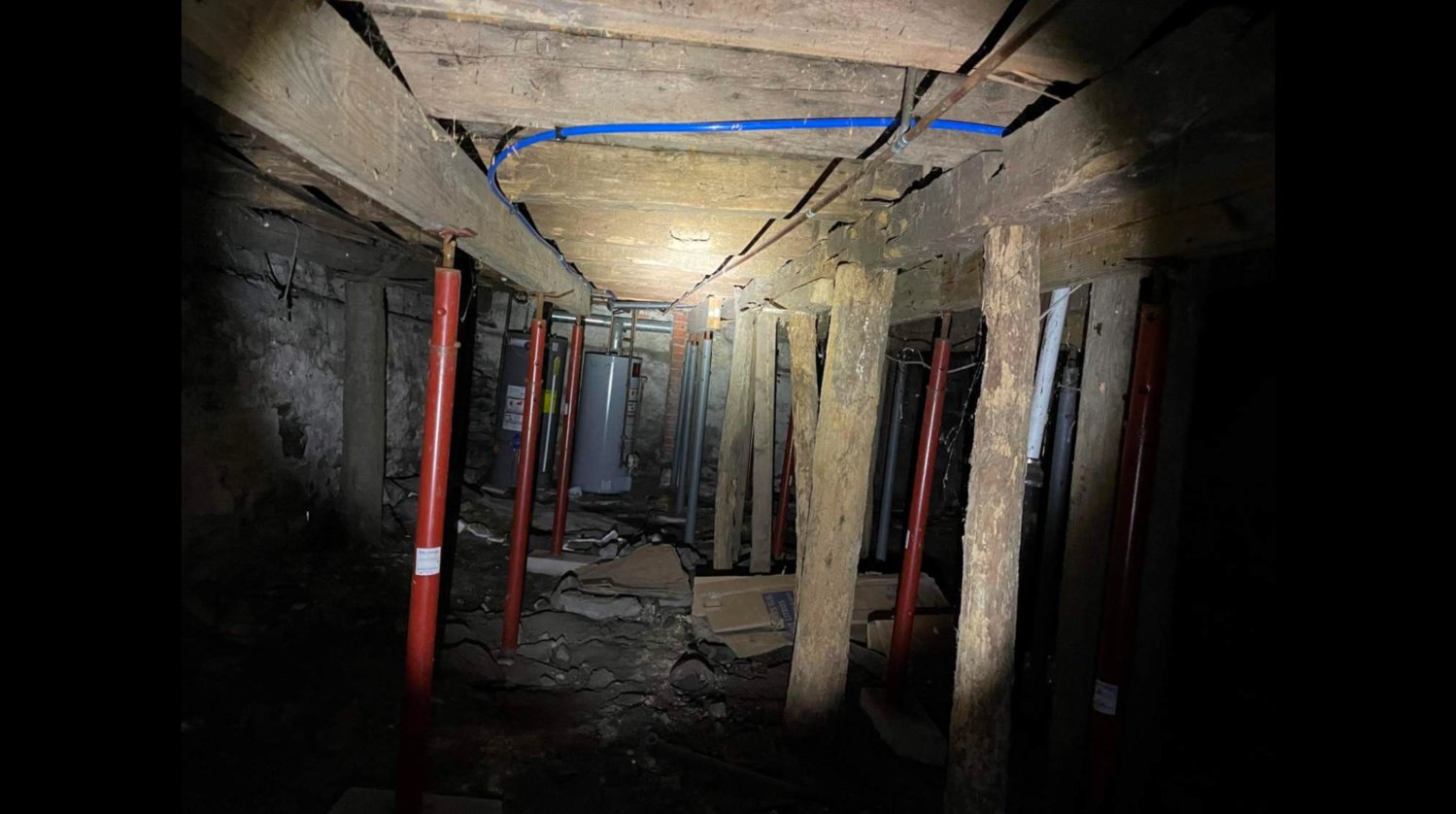Preservationists rally to save historic Water Street buildings
Historic preservation proponents are rallying to save two buildings on Water Street that hang in the balance of possible demolition to build a new housing development.
This item is available in full to subscribers.
Please log in to continue |
Register to post eventsIf you'd like to post an event to our calendar, you can create a free account by clicking here. Note that free accounts do not have access to our subscriber-only content. |
Day pass subscribers
Are you a day pass subscriber who needs to log in? Click here to continue.
Preservationists rally to save historic Water Street buildings
Historic preservation proponents from Warren and beyond are rallying around an effort to save two buildings on Water Street that hang in the balance of possible demolition ahead of a pending decision by the Warren Planning Board next week.
The properties at 113 Water St. and 119 Water St. both sit on land in the town’s historic district, which has been identified as part of the National Register of Historic Places since 1974. The land was purchased and is looking to be developed by Daniel Teodoro, owner of the Waterdog restaurant, into a 12-unit, three-story apartment building, where three of those would be listed at 80% of the area median income, and nine at market value. In order to build that development, those properties (built in the late 19th century) would need to be torn down.
At the time of writing this article, an online petition started by residents opposed to their demolition had reached 469 signatures. (As of this posting, it has reached 580).
“Every effort should be made to save these buildings, including speaking to multiple contractors that specialize in historic restoration,” wrote Paula Silva on the petition page. “Will it be costly? Yes, I'm sure, but not as costly as building the proposed structure and not nearly as costly as it will be to the street and neighborhood. The current proposal will dramatically change the historic character of the street and will set a precedent for the future.”
Why the buildings are at risk of demolition
It is understood even among members of the group trying to save the buildings that each of the properties in question are not in good condition.
Two engineering reports were conducted on 119 Water St., one from the developer’s chosen company (J2Construct), and one subsequently from the town’s contracted engineering firm (Fuss & O’Neill). Both came back with conclusions that the property was in an advanced state of disrepair with significant structural deficiencies. The J2Construct report gave an estimate of $931,700 to restore the building to a viable condition. No engineering report has been performed to date on 113 Water St, which has sat vacant for over a year, according to Town Building Official Matt Cabral.
Cabral, in a report to the planning board last week, said that he had conducted an inspection of both buildings, and concurred with the engineering reports for 119 Water St. that it was not suitable for human occupancy. He found the same in 113 Water St., leading them both to be condemned about a month ago.
“I do not want to knock buildings down,” Cabral clarified to the board. “But if it’s [about] life safety and it’s a hazard to life, and I’m forced to knock a building down, then I am required to do it by law.”
Condemning the buildings triggered a 30-day period for the few residential occupants and one commercial tenant of 119 Water St. to find new accommodations and for Teodoro to present one of two options to the planning board — either a plan to renovate and bring the condemned properties up to code, or to request a waiver in order to demolish them.
No plan to restore the properties came forward, but two demolition waivers did.
What will determine their fate?
Since the development is being proposed through a comprehensive permit application under the state’s affordable housing statute — which gives a certain amount of leeway to developers within communities that haven’t reached a threshold of 10% of their total housing stock priced at a certain range within the area median income (AMI) — the decision of whether to allow the demolition (and the development as a whole) falls to the planning board alone.
In order to allow for the destruction of properties within the historic zone, the board must determine any one of the following:
- The property will become a hazard to public safety if it remains standing;
- Preserving the building would constitute an “undue financial burden” to the owner;
- Preserving the buildings would not be in the best interest of the community.
Board chairman Fred Massie tried to make it clear last week that the board appreciated the difficult decision they have to make.
“Any building can be restored if you throw enough money at it. The question is what is financially feasible,” he said, specifically referring to 119 Water St. Massie said in an interview last week that there had been no parties coming forward that were interested in trying to purchase and preserve the properties.
“We haven’t had anyone come forward and say, ‘We’re willing to buy this property and do whatever it takes to restore it.’ So we have something of a conundrum here,” he continued during the meeting last week. “There’s a building that has been, by all accounts, for 30 years deteriorating. And nothing was done. That’s a whole other issue…The people who are concerned about the historic value of Water Street, and the potential threat that inappropriate development would cause, have been heard and understood.”
Advocates speak up
As part of the demolition process for properties in the historic district, normally the Warren Town Council would seek an advisory opinion from the Warren Voluntary Historic District Commission (HDC). In this case, due to the comprehensive permit process, they would send that opinion to the planning board, which they did last week.
“Warren is blessed with an abundance of riches in its historic downtown, hundreds of buildings representing every period of history and architecture, so it can be easy to think that some of these buildings are expendable,” the HDC wrote in the conclusion of their report. “The buildings currently located at 113 and 119 Water Street contribute to the significance of the Warren Waterfront Historic District by virtue of their age and type.”
The letter details multiple grievances with the process thus far, including their assertion that an engineering firm that specializes in historic property renovations should be allowed to provide a report on the building in order to get a more accurate portrayal of what it would cost to restore them.
In the same vein, they argue that the developer has presented no financial information publicly to inform whether or not such a renovation would amount to an “undue burden” as mentioned above.
“These two buildings have been neglected, however, there has been no objective evidence presented that they are beyond repair or that repair is beyond the financial resources available to the owner,” the HDC letter states, adding that historic tax credits are often available to help finance such endeavors.
Doing their part, Valerie Talmage, executive director of Preserve RI, sent a lengthy letter explaining multiple reasons why the demolition (and the project as a whole) should not go forward. The letter includes a rebuke of the restoration estimate provided by J2Construct, and alleges that the developer has not submitted sufficient evidence to show either a financial hardship or that the buildings do not contribute significant historical significance to the waterfront district.
“Boards are not required to act when information is insufficient,” Talmage writes. “The project proponent doesn’t get to pick and choose what buildings are considered historic – both buildings are specifically included in the National Register nomination as contributing to the historical significance of the district. If the project proponent intends to claim that the building was listed in the National Register by error or no longer retains its historic character, they need to document those claims, not just be silent about the property.”
During last week’s Monday meeting of the planning board, members of the public also spoke up regarding their dissent to the proposed demolition, and their displeasure with how the developer has not seemingly pursued any plan to salvage the buildings.
“The current owner purchased the property in the last year…He must have been aware at the time of the condition of the property,” said Joan Coltrain of Stonegate Road. “Yet he did nothing to make it any safer. He continued to collect rent from commercial and residential occupants. This may not bear at all on what happens, but it appears to me…that demolition was certainly what he had in mind when the property was purchased. No effort was made to make it a safer place for tenants, although he continued to collect rent, until he was prepared to come forward with this comprehensive [permit]. And perhaps there is nothing we can do about any of that. But I find it, what’s the word I want to use? Disturbing.”
Adding to the choir of voices opposing demolition, the Rhode Island Historical Preservation & Heritage Commission wrote a letter of its own advocating for saving the buildings.
“As contributing buildings in the National Register Historic District, demolition of 113 and 119 Water Street would have an adverse effect not only on the buildings, themselves, but also on the district, as a whole,” writes Jeffrey Emily, Interim Executive Director of the commission and the interim State Historic Preservation Officer. “The removal of a historic building should only be done as a last resort.”
‘The elephant in the room’
Reached this past Friday, ahead of the planning board’s decision on Monday night, Town Planner Bob Rulli expressed his understanding of where preservation advocates were coming from — but he did so with a caveat.
“If this building could be saved at a reasonable amount or wasn’t is such a state of disrepair, I would probably be in a different place,” he said. “But I also know what the economics are.”
Rulli contends that for all the valid points made about the importance of preserving historic buildings in Warren, he questions the validity of specifically the two buildings at the heart of this discussion.
“I don’t see that that building [119 Water St.] is contributing anything to the local community right now, or the building behind it that has been vacant because it was in such bad shape,” he said. “If I put my economic development hat on, yeah, I want to see something positive happen there.”
Rulli stated again, as he had in the past, that the town has been put in a very difficult and unfavorable position due to the state law that enabled this project in the first place.
“I can’t change the law,” he said.











